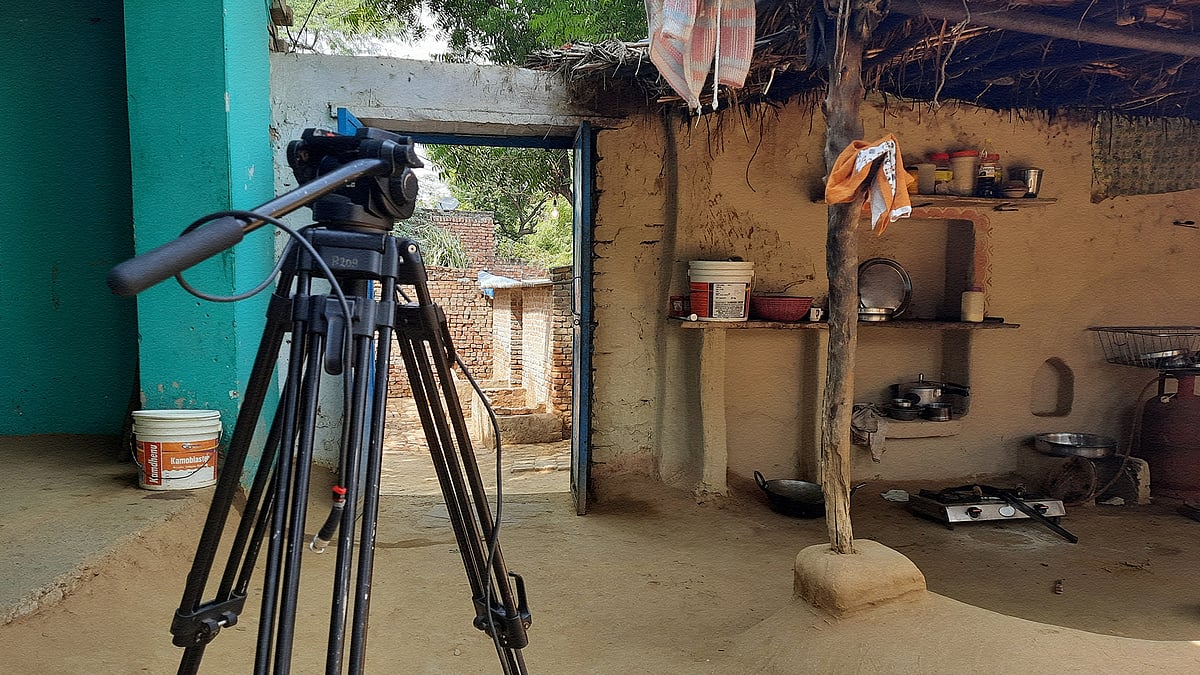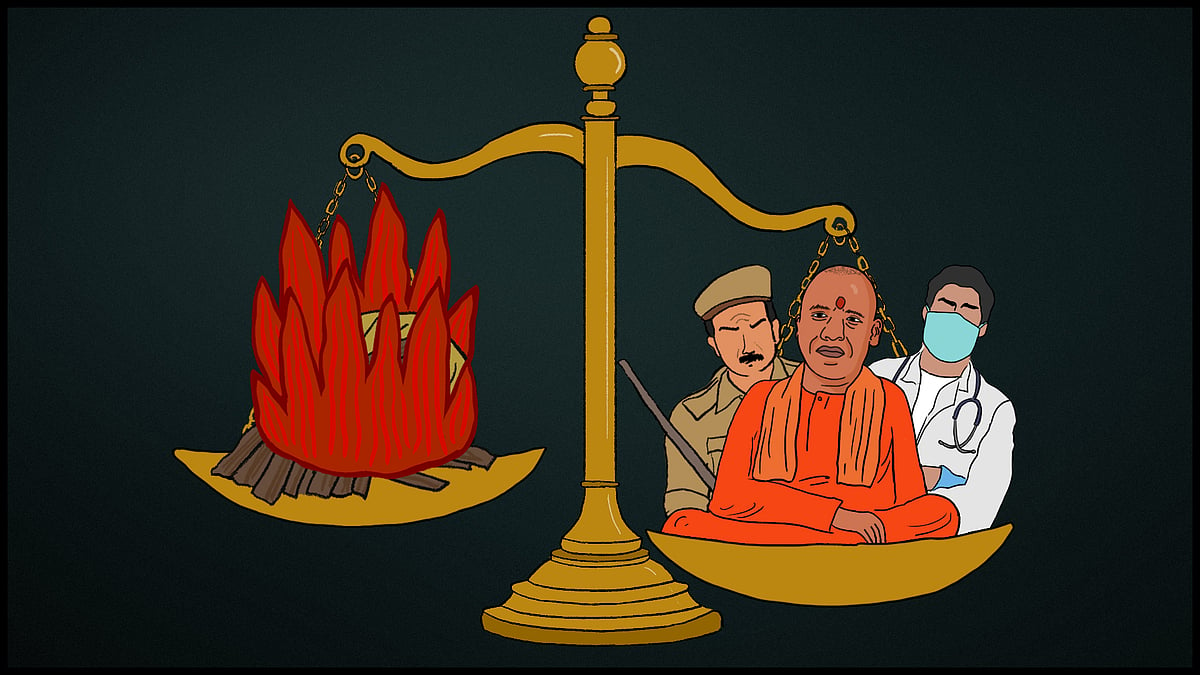Revisiting Hathras: ‘Why wasn’t my sister taken seriously when she was alive?’
The case of the young Dalit woman’s rape and murder is a story of state apathy and deliberate errors.
After the Nirbhaya movement in 2012, following the gangrape and death of Jyoti Singh in Delhi, some closure was found when the Criminal Law Amendment Act was passed the following year, introducing tougher legislation against rape in India.
Yet, eight years later, the system remains the same, and this is perfectly illustrated by the case of the gangrape and subsequent death of a Dalit woman in Uttar Pradesh’s Hathras.
Asha, 19, was raped by four Thakur men in September. She died in a Delhi hospital two weeks later. In the interim, Asha repeatedly said she had been raped. She gave four dying declarations — to her family, a doctor, a journalist on camera, and the tehsildar, who is an executive magistrate — but the system refused to believe her.
Instead, the Adityanath government claimed she hadn’t been raped, going so far to issue a press release about it, and the Uttar Pradesh police called it an “international plot” to defame the government. They were assisted in this endeavour by sections of the media.
On December 18, the CBI, having taken over the investigation, filed a chargesheet in the case. Ten weeks after Asha’s death, the CBI confirmed what she had said in four dying declarations: that she had been raped.
Here’s a rundown of how the investigation was botched from the start.
The ADG’s role
Asha died on September 29. At around 2 am on September 30, her body was forcibly cremated by the Uttar Pradesh police, without a single family member being present.
Two days later, Prashant Kumar, the additional director general, law and order, of the Uttar Pradesh police, held a press conference where he declared that a forensic report had found no sperm in samples collected from Asha. Based on this, Kumar told the media that the report “makes it clear that the woman was not raped”.
Four days later, Dr Azeem Malik at the Aligarh hospital, where Asha was admitted after her gangrape, told the media that Kumar’s statements “hold no value” since Asha’s samples had been collected 11 days after her attack and sperm, even if present, does not survive for more than two or three days.
Now that the CBI chargesheet has confirmed Asha’s gangrape, what does Kumar have to say?
“I was stating an opinion based on the forensic science laboratory report,” he told Newslaundry. “My statement cannot be counted as a fact. The final opinion would anyway have been of the investigating officer, not me.”
But should the forensic report have been counted as a reliable source of information, considering the samples were collected so late?
“I can only comment on what the report said, and I did,” Kumar said. “More than that, because the Supreme Court has made the definition of rape so broad, I can’t say anything.”
Kumar clearly placed no value on Asha’s dying declarations, even though they have high evidentiary value. The law presumes that a rape victim, especially before dying, has no reason to lie and so, her dying declaration cannot be summarily dismissed. Additionally, the mere absence of sperm does not discount the occurance of rape.
Given the forensic science lab report itself might not hold evidentiary value, was his comment worth making at all? Kumar replied: “I responded merely to the report. My comment should never have affected any investigation.”
But it did. A senior doctor at the Aligarh hospital, who had spoken with the police about Asha’s case, told Newslaundry Kumar’s comment “affected the mindset of the police on the ground, and that’s when they started leaning more towards the theory of honour killing”.
In the aftermath of Kumar’s press conference, he added, local journalists and police who spoke to him about the case also constantly questioned him why it was a case of rape and why it wasn’t an honour killing.
Yet, Kumar said the CBI took over the case not because the police proved incompetent but because of the public “hue and cry”. He added that if the Uttar Pradesh police had continued to investigate, “we too would have reached the same conclusion as that of the CBI”.
It should be remembered that on October 12, Kumar and other officials were summoned by the Allahabad High Court to furnish a “status report” of the investigation. At the hearing, the court asked Kumar about Asha’s forced cremation. “If you had a daughter, would you allow the funeral to take place without seeing her body?” the court asked. Kumar was reportedly unable to answer.
Now, there is mounting pressure to hold Kumar accountable for Asha’s forced cremation as well as his comment that there had been “no rape”. He remains on active duty.
The CBI’s investigation
Notwithstanding the CBI’s conclusion, there are allegations that the agency had tread the path of “no rape” before filing its chargesheet.
For example, the Aligarh doctor connected with the case told Newslaundry he was questioned by the CBI for over an hour. One of the questions was whether Asha “looked like a rape victim”.
“How am I supposed to answer?” he asked, adding he had met Asha only once. “What does that mean?”
The CBI also asked about the journalist to whom Asha had given a dying declaration on camera while at the hospital. “They were very keen on trying to find out who that journalist was,” the doctor said, “because they said he was asking the victim leading questions.”
The agency told the hospital staff to state in writing that Asha did not “look like she had been raped”, the doctor claimed. Around 50 medical personnel were interviewed by the CBI from two hospitals, he added.
But despite this line of questioning, the doctor said, the CBI just could not ignore the dying declaration Asha had given to the district magistrate naming her rapists. “It is a very strong and clear dying declaration,” the doctor said.
The police's role
On September 14, hours after she had been raped, Asha was taken to the Chandpa police station, the CBI’s chargesheet notes. Based on her brother’s statement, the police filed an FIR charging one Sandeep with attempt to murder. Sandeep was also charged under the Scheduled Castes and the Scheduled Tribes Prevention of Atrocities Act.
The chargesheet adds, “At police station Chandpa, Sh. Satendra Kumar laid the victim upon a cemented platform within the premises of police station.”
Newslaundry had met Asha’s family on September 26. At that time, she was fighting for her life in the ICU of the Jawaharlal Nehru Medical College in Aligarh. Her brother had told us that “nobody listened to us” at the Chandpa police station.
“The police kept saying, ‘Just take her from here. She’s being dramatic and lying here. Do you want to trap us?’” the brother said.
Finally, based on Asha's family's statement, on September 19, police superintendent Vikrant Vir added rape charges to the initial FIR. Two days before, on September 17, Asha had told her family that Sandeep and three other Thakur boys from the village had attempted to rape and kill her. According to Asha’s mother, the family approached the circle officer Ram Shabd but he wasn’t available. They then met district magistrate Praveen Kumar Laxkar on September 18 and told him about the rape. Nothing came out of that meeting.
On the day the family met Laxkar, a local journalist took a video of Asha in hospital. In the video, she lay on a white stretcher, looked into the camera, and clearly said, “mere saath zabardasti kiya gaya hai” — a colloquial way of referring to rape.
Finally, on September 19, five days after Asha’s rape, her brother said they met Vikrant Vir, the superintendent of police, who agreed to add charges of gangrape and the names of the other three accused to the FIR. According to the CBI chargesheet, Asha was examined at the Aligarh hospital on the same day, where her statement was recorded by “lady constable Ms Rashmi” in the presence of circle officer Ram Shabd, investigating officer Sanjay Kumar, and constable Munshi.
So, why did it take five days for the police to even file an FIR with charges of rape?
Importantly, by September 26, the incident had gained media attention. On September 27, Dinesh Kumar Verma, the station house officer of Chandpa police station, was transferred. Police superintendent Vikrant Vir told Newslaundry that Verma was transferred due to his “inability to build confidence in the community and control the situation”. Verma was replaced by inspector Lakshman Singh.
On September 28, Asha was transferred to Delhi’s Safdarjung Hospital, despite the family asking that she be moved to AIIMS, Delhi. She had been kept in a normal ward for six days before being moved to the ICU at Aligarh hospital on September 20. By this time, due to spinal injuries, Asha had quadriplegia — a complete paralysis in all four limbs. Additionally, the injuries to her neck were causing breathing problems. "Usually patients are transferred when we cant give adequate care but in this case, till date, no one knows why she was shifted to Delhi. And if her condition was so serious, why wasn’t she shifted as soon as her condition was diagnosed?" asked a senior doctor from Aligarh hospital.
A doctor at the Aligarh hospital told Newslaundry: “It is important to ask why the patient was not transferred to a hospital of their preference, especially since AIIMS could also have provided the treatment she required.”
Asha died on the morning of September 29. That night, her body was taken to Hathras in an ambulance. No family member was present in the vehicle. Neither the hospital nor the police have been held accountable for this yet.
Asha was cremated at 2.30 am on September 30 by the Uttar Pradesh police, without her family’s consent. Family members alleged that they were “manhandled” by the police and stopped from protesting Asha’s cremation. A journalist took a video of a police officer telling the family, “In this extraordinary situation, you have to accept that you have made some mistakes.”
Crucially, the cremation took place before the family could ask for a second postmortem.
After public outrage, the state government on September 30 constituted a three-member special investigation team to probe what had happened. Based on the SIT’s preliminary findings, six police personnel — including police superintendent Vikrant Vir, circle officer Ram Shabd, senior sub-inspector Jagveer Singh and head constable Mahesh Pal — were suspended. Dinesh Kumar Verma, the former station house officer who had been transferred, was also suspended.
According to an India Today report, Verma was recorded on camera, confessing that he did not attend to or provide immediate care for Asha. "My negligence lies in not seeing (the victim), not providing treatment [to her], not sending a constable along [from Hathras to Aligarh]," he was quoted as saying.

Vikrant Vir, superintendent of police, was suspended after the girl's death.
The district magistrate
Officially, district magistrate Praveen Kumar Laxkar is answerable as to why Asha was forcibly cremated. Till date, Laxkar has maintained that the decision was taken in view of the “law and order situation”.
On October 1, the Allahabad High Court took suo motu cognizance of the case. On October 27, the Supreme Court granted it permission to monitor the investigation. Over two hearings with the state, the high court expressed concern as to why Laxkar continued to remain in service after the forced cremation while police superintendent Vikrant Vir had been suspended.
The state responded that Vir had been suspended due to “laxity” in the probe into the case, and not over the cremation. Both Laxkar and Vir submitted affidavits to the court, maintaining that the cremation was done to “maintain law and order”. The affidavits also said that allegations that kerosene was used to burn the body were false.
However, Asha’s family has said that Laxkar “threatened” and pressured them. On September 30, hours after his daughter was cremated, Asha’s father was escorted to the police station for a video interaction with chief minister Ajay Bisht. The father told Newslaundry: “DM saab and others forced me to say the media has done their job and should go home now.”
Laxkar later imposed Section 144 on the area as pressure mounted on the Uttar Pradesh police in the wake of Asha’s cremation. A video also went viral, showing him speaking to Asha’s family. In the video, Laxkar said: “Do not finish your credibility. These media people...some left today and tomorrow more will leave. Only we will be here with you. Okay? It is up to you whether you want to change your statement or not. We can also change.”
Yet, Praveen Kumar Laxkar continues to remain on duty.
The medical examination
Asha’s gangrape could have been an open and shut case if her medical examination had taken place in a timely manner.
According to her cousin who was with her at the time, the hospital had been informed of possible sexual assault on September 17, three days after the rape. However, the hospital refused to conduct a rape examination, demanding that the relevant section first be added to the FIR.
It took five more days for the rape examination to take place, a violation of Section 375 of the Criminal Procedure Code, which states that “all hospitals, private or public” must provide free treatment to a victim of sexual assault and “immediately inform the police of such incident”.
While Asha’s postmortem report did not state that she had been raped, it mentioned an “old healed anal tear”. Given that the postmortem took place 15 days after the assault, it’s possible that she suffered this injury during the rape.
The death summary, however, stated “rape and strangulation”.
Like the district magistrate, the medical authorities haven’t been held accountable yet.
Asha’s brother, Sandeep, told Newslaundry that if his sister “had been taken seriously when she was alive”, she could have been saved.
When asked about the CBI investigation, Sandeep said they probably did their job by covering all angles, but said: “The CBI repeatedly asked us about honor killing. They must have heard it from locals and journalists so they asked us a few times to admit if we killed her.”
He added: “While the CBI chargesheet gives us some hope for justice, we will never forget how much we had to beg the police and media to help save our sister's life. Why was she not taken seriously when she was alive?”
This report is based on parts of the chargesheet obtained by Newslaundry. The name of the victim has been changed to protect identity.
 Amidst slander and constant vigil, Hathras victim's family seeks closure
Amidst slander and constant vigil, Hathras victim's family seeks closure From indifference to victim-blaming: Why the mainstream media’s coverage of Hathras is unsurprising
From indifference to victim-blaming: Why the mainstream media’s coverage of Hathras is unsurprising Hathras girl wasn’t raped, UP police say. Wasn’t she?
Hathras girl wasn’t raped, UP police say. Wasn’t she?NL Digest
A weekly guide to the best of our stories from our editors and reporters. Note: Skip if you're a subscriber. All subscribers get a weekly, subscriber-only newsletter by default.
